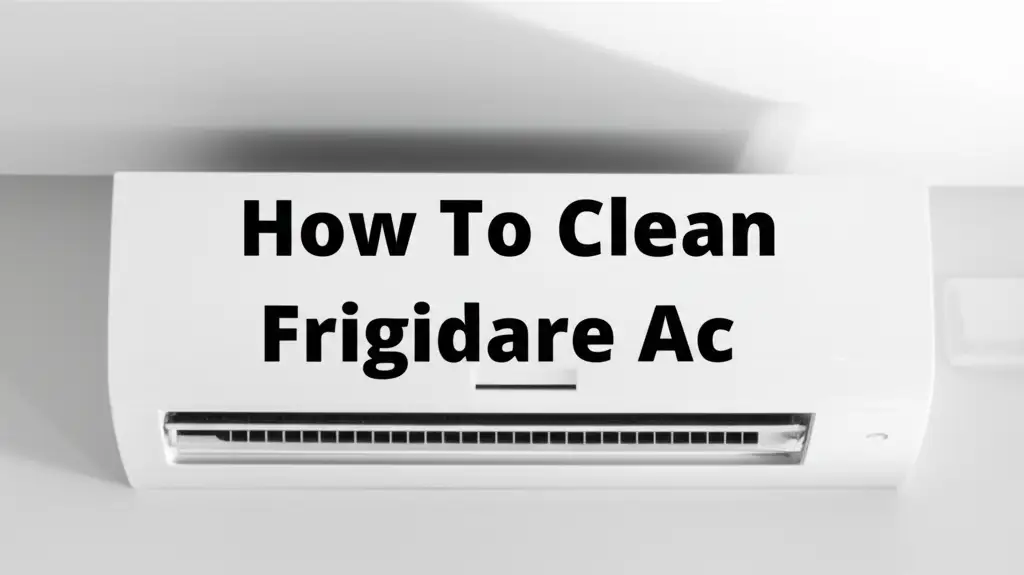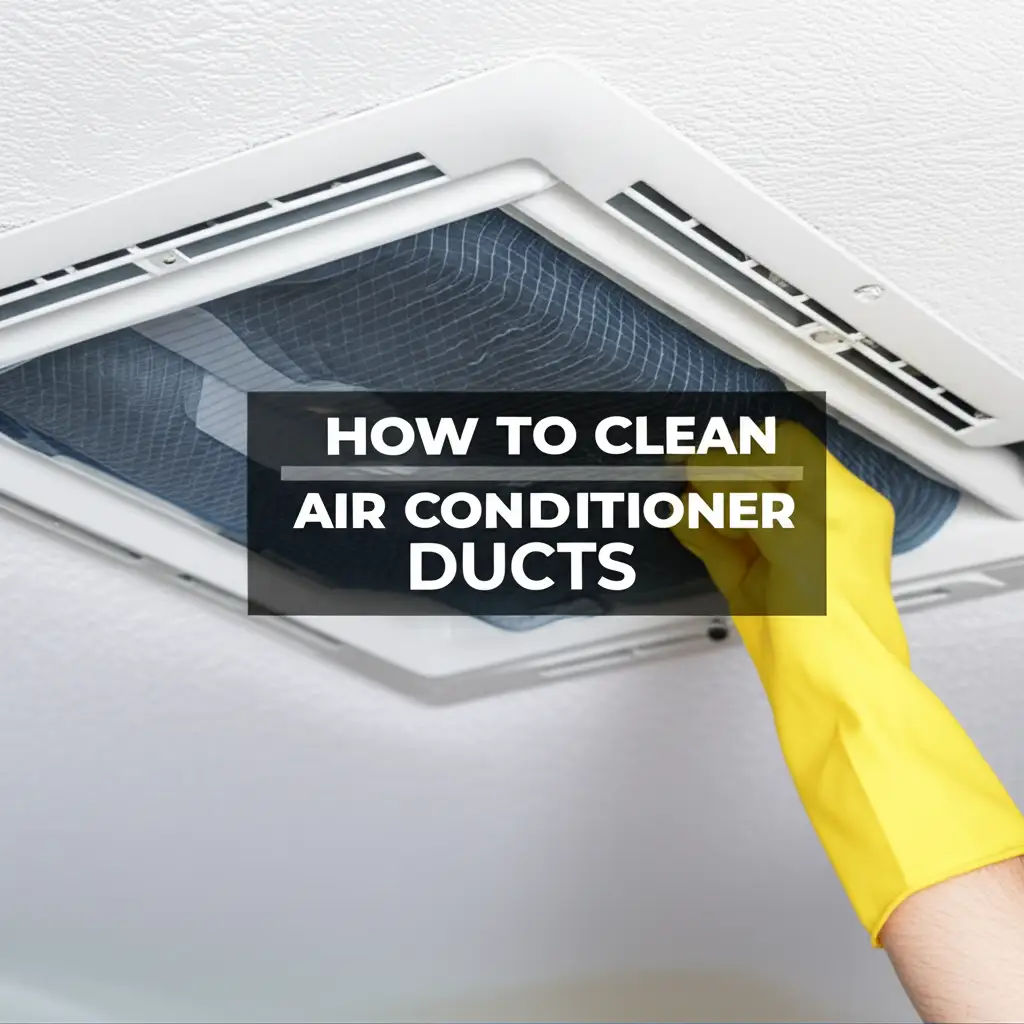· Home Maintenance · 16 min read
How To Clean Ceiling Fan Without Ladder

Effortless Ways to Clean Ceiling Fan Without Ladder
Cleaning a ceiling fan often feels like a daunting task. The height of these fixtures makes access a real challenge. Many people avoid cleaning their ceiling fans because they do not want to use a ladder. Ladders present safety risks, like falling or losing balance. But, neglecting your ceiling fan allows dust and grime to build up. This buildup can affect air quality and fan efficiency.
I understand the struggle of trying to reach those dusty blades. It is a common household chore that many dread. What if I told you there are smart, safe ways to clean ceiling fan without ladder? This article will show you practical tools and clever techniques. We will explore methods that keep your feet on the ground. You will learn how to make your fan sparkle safely.
Takeaway
- Prioritize Safety: Always turn off the fan’s power before starting.
- Use Extendable Tools: Long-handled dusters and vacuum attachments reach high.
- Employ the Pillowcase Method: Trap dust efficiently with a simple pillowcase.
- Spot Clean Smartly: Use gentle cleaning solutions for sticky grime.
- Maintain Regularly: Frequent, light dusting prevents heavy buildup.
To clean a ceiling fan without a ladder, you can use extendable tools like long-handled dusters or a vacuum with a hose attachment. The pillowcase method offers a mess-free way to capture dust directly from the blades. Always ensure the fan is powered off for safety.
Understanding the Challenge: Why Ladder-Free Cleaning?
Reaching a ceiling fan can be tough. Many ceiling fans sit high up, making them hard to access. Using a ladder to clean your fan comes with risks. A person can fall, causing serious injury. This danger makes many people put off cleaning. It is a common reason for dusty fan blades.
Some homes have very high ceilings. Standard household ladders may not be tall enough. Even if a ladder reaches, balancing on it while cleaning is tricky. You need both hands to clean effectively. Holding onto a ladder leaves fewer hands free for the actual work. This makes the job feel harder.
Regular cleaning prevents heavy dust accumulation. A dusty fan pushes dust around your room. This can worsen allergies and reduce air quality. It also makes your fan less efficient. Dirty blades create more drag, making the motor work harder. This can even increase energy costs.
My goal is to show you a better way. You do not need to risk your safety. There are simple tools and methods that keep you on solid ground. We want your home to be clean and safe. Cleaning your ceiling fan should not be a dangerous chore. It should be easy and quick.
Many people also find setting up a ladder inconvenient. Moving furniture, unfolding the ladder, and then putting it away takes time. Ladder-free methods save time and effort. They allow for quicker, more frequent cleaning sessions. This keeps your fan looking good all year.
Essential Tools for Reaching High Ceiling Fans
Cleaning a high ceiling fan without a ladder requires the right equipment. These tools extend your reach safely. You can find most of them at a local hardware store. Some might already be in your cleaning cabinet. Choosing the correct tools makes the job much simpler.
One of the best tools is a long-handled duster. These dusters often have extendable poles. They can reach surprising heights. Look for a duster with a microfiber head. Microfiber material attracts and holds dust very well. Some duster heads are flexible, allowing them to bend around fan blades. This flexibility helps clean both sides of the blade at once.
Another great option is a vacuum cleaner with an extension wand and brush attachment. Many vacuums come with these accessories. The extension wand adds significant length. The brush attachment helps loosen and collect dust. This method is effective because the vacuum sucks up the dust. It prevents dust from falling onto your furniture or floor. This can be especially useful for larger particles or cobwebs that might cling to the fan. If you are cleaning other fan types, like an exhaust fan, these attachments can also be very helpful. Learn more about cleaning a bathroom exhaust fan without removing it here: how to clean bathroom exhaust fan without removing.
A simple pillowcase is also an essential “tool.” This everyday item is perfect for the popular “pillowcase method.” We will discuss this method in detail soon. It captures dust directly from the blade. This prevents dust from spreading through the air. You likely have one in your linen closet right now.
For more stubborn grime, you might need a spray bottle and a clean cloth attached to a pole. You can use a paint roller extension pole. Securely attach a clean microfiber cloth to the end. This allows you to spray a cleaning solution and then wipe the blades. Always make sure the cloth is firmly attached. This prevents it from falling.
Consider keeping these items ready for your next cleaning day. Having them on hand encourages more frequent fan cleaning. You will save time and effort in the long run. These tools make the task easy and safe.
Step-by-Step Guide: The Pillowcase Method for Dust Control
The pillowcase method is a brilliant way to clean ceiling fan without ladder. It is simple, effective, and keeps dust contained. This method minimizes the mess in your room. You will be amazed at how well it works. It is my favorite technique for quick dusting.
First, turn off the ceiling fan power. This is the most important step for safety. Do not just use the wall switch. Find the circuit breaker for the fan and flip it off. This prevents the fan from accidentally turning on while you are cleaning. Safety should always come first.
Next, get a clean, old pillowcase. An old pillowcase is best because it will get dirty. Position the pillowcase over one fan blade. Slide the pillowcase over the entire blade, covering it completely. Push it close to the motor housing. Make sure the open end of the pillowcase faces the fan’s center.
Now, hold the pillowcase firmly around the blade. Slowly pull the pillowcase back towards you. As you pull, the dust from the blade will fall directly into the pillowcase. This action traps the dust inside the fabric. You will see all the dust collected neatly. This prevents it from scattering onto your floor or furniture.
Repeat this process for each fan blade. Take your time with each one. Make sure you cover the entire blade surface. Once all blades are clean, carefully remove the pillowcase. Take it outside or directly to a trash can. Shake out the trapped dust. Then, simply toss the pillowcase into the laundry for washing. It is an incredibly clean and efficient process.
This method works wonders for general dust. It is especially good for ceiling fans that have not been cleaned in a while. It prevents a dust storm in your living room. You will appreciate the lack of cleanup afterward. It is a smart way to manage dust, just like learning how to clean dust off popcorn ceiling needs specific strategies.
Effective Duster Techniques for Various Fan Types
Not all ceiling fans are the same. Some have flat blades, others are curved. Some have light kits or intricate designs. Using the right duster technique makes cleaning efficient. Your extendable duster becomes your best friend here. It helps you reach every part of the fan.
For flat fan blades, an extendable microfiber duster is ideal. Extend the pole to the necessary length. Gently wipe the top and bottom surfaces of each blade. Microfiber picks up dust effectively. Move from the base of the blade towards the tip. Use long, even strokes. This ensures you cover the entire surface. If your duster head is flexible, you might be able to wrap it around the blade. This cleans both sides in one pass.
If your fan has curved or ornate blades, precision is key. A duster with a smaller, more flexible head works best. You might need to adjust the duster head angle. Work slowly around the curves. Ensure the duster makes contact with all surfaces. For very intricate designs, a soft bristle brush attachment on an extendable pole can help. This gets into nooks and crannies where dust hides.
Do not forget the motor housing. Dust often collects on the top and sides of the motor unit. Use your extendable duster to wipe down these areas. For light fixtures attached to the fan, gently wipe them too. If they have glass covers, use a separate, damp cloth for cleaning. Always ensure the fan is off and cool before touching the light components.
Regular dusting prevents heavy build-up. A quick wipe-down once a month is better than a deep clean once a year. This keeps your fan running smoothly and looking clean. It also improves your indoor air quality. I find that quick, frequent cleaning saves a lot of time in the long run.
Remember to clean your duster regularly. A dirty duster will just spread dust around. Shake it out outdoors or wash the microfiber head as needed. A clean tool does a better job. This simple maintenance ensures your duster remains effective.
Tackling Stubborn Grime: Solutions and Spot Cleaning
Sometimes, dust is not the only problem. Ceiling fans can accumulate sticky grime, especially in kitchens or humid areas. This grime often contains grease or airborne particles. Simple dusting will not remove it. You need a cleaning solution for these tougher spots. But, you can still clean ceiling fan without ladder.
First, prepare a gentle cleaning solution. A mixture of equal parts white vinegar and water works well for most grime. For tougher spots, add a few drops of mild dish soap to the vinegar and water solution. Vinegar is a great natural cleaner. It cuts through grease and helps sanitize surfaces. Learn more about cleaning with natural ingredients here: how to clean with vinegar and baking soda. Put your solution into a spray bottle.
Next, attach a clean microfiber cloth to an extendable pole. You can use strong rubber bands or clips to secure it tightly. Make sure the cloth will not slip off. Lightly spray the cleaning solution onto the cloth, not directly onto the fan. You want the cloth damp, not dripping wet. Excess moisture near electrical components is dangerous.
Carefully wipe down each fan blade with the damp cloth. Work slowly and methodically. Apply gentle pressure to loosen the grime. For very sticky spots, you might need to wipe the same area a few times. The vinegar solution will help dissolve the sticky residue. The damp cloth will pick it up.
After cleaning with the damp cloth, you may want to follow up with a dry cloth on the pole. This helps to remove any excess moisture and prevents streaks. A clean, dry microfiber cloth will leave the blades sparkling. Ensure the fan blades are completely dry before restoring power.
If the grime is particularly thick, you might need to repeat the process. Always focus on safety. Do not overspray the solution. Keep liquids away from the motor and electrical wiring. This method lets you tackle stubborn messes without climbing. It keeps your fan looking new and functioning efficiently. This spot cleaning is essential for a truly clean fan.
Safety First: Important Precautions for Ladder-Free Cleaning
Even when cleaning a ceiling fan without ladder, safety is crucial. You are still working with an electrical appliance. You are also reaching high areas. Taking simple precautions prevents accidents. Your well-being is the top priority.
Always turn off the power to the ceiling fan before starting. This is the most critical step. Do not just use the wall switch. Go to your home’s electrical panel. Find the circuit breaker that controls the fan. Flip it to the “off” position. This ensures no power reaches the fan while you are working. An accidental start could cause injury. Confirm the power is off by trying to turn the fan on with the wall switch. If it does not respond, the power is off.
Ensure you have a stable footing below the fan. Do not stand on wobbly chairs or stools. If you must use a step stool for a little extra height, ensure it is sturdy. Keep your cleaning area clear of obstacles. You do not want to trip or lose balance. Maintain a firm grip on your extendable tools.
Consider wearing eye protection. When cleaning a dusty fan, dust particles can fall. These particles might irritate your eyes. Safety glasses or even regular eyeglasses offer some protection. Wearing a face mask can also help if you are sensitive to dust. This prevents inhaling large amounts of airborne particles.
Avoid spraying liquids directly onto the fan or its components. Water and electricity do not mix. If you are using a damp cloth, ensure it is only slightly damp. Wring out any excess moisture before placing it on your pole. Keep cleaning solutions away from the motor housing and electrical connections. A little moisture on the blades is fine, but direct spraying is risky.
Ventilation is also important. If you are using any cleaning solutions, even mild ones, ensure the room is well-ventilated. Open windows or doors. This helps fresh air circulate. It disperses any fumes from cleaning products. Breathing fresh air makes the cleaning process more pleasant.
Finally, be mindful of your surroundings. Do not overreach. If a spot is too hard to reach safely, consider professional help. It is better to leave a small spot uncleaned than to risk injury. Following these safety steps protects you. It makes cleaning your ceiling fan a worry-free task.
Maintaining Fan Cleanliness: Beyond the Deep Clean
Cleaning your ceiling fan without a ladder does not have to be an annual ordeal. Regular maintenance keeps your fan sparkling. It prevents dust from building up to extreme levels. This makes future cleanings much faster and easier. Think of it as preventative care for your fan.
Implement a regular light dusting schedule. Once every month or two, give your fan a quick wipe-down. Use your long-handled microfiber duster for this. A few minutes of effort can save you hours later. This routine prevents the sticky grime from forming. It also ensures consistent air quality in your home. This is similar to routine cleaning for other parts of your home, like making sure your entire ceiling is clean.
Consider the impact of fan cleanliness on your indoor air quality. A dirty fan circulates dust, allergens, and other airborne particles. This can worsen respiratory issues for people in your home. A clean fan helps distribute clean air. It contributes to a healthier living environment. Good air quality is vital for everyone’s well-being.
Your home’s overall dust levels also affect your fan. If your home is generally dusty, your fan will get dirty faster. Regular vacuuming, dusting furniture, and changing air filters help reduce airborne particles. This reduces the amount of dust that settles on your fan. Think of your fan as part of a larger air circulation system in your house.
Pay attention to the signs of a dirty fan. If you see visible dust on the blades, it is time to clean. If your fan makes more noise than usual, it could be due to dust imbalance. Excessive dust can sometimes throw off the blade balance. This can lead to wobbling and noise. A clean fan operates more quietly and efficiently.
Adjust your cleaning frequency based on use and environment. If your fan runs constantly, it will gather dust faster. If you live in a dusty area or have pets, you might need to clean more often. Conversely, a fan used only occasionally in a clean home needs less frequent attention.
Remember, a clean fan is an efficient fan. It moves air better, potentially saving energy. It also looks much better in your room. Routine maintenance is the key to enjoying a clean ceiling fan without the hassle. It becomes a simple, quick task rather than a major project.
FAQ Section
How often should I clean my ceiling fan without a ladder?
Aim to clean your ceiling fan at least once every 1-3 months. If your fan runs daily, or if you live in a dusty area with pets, consider cleaning it monthly. Regular light dusting prevents heavy buildup and makes each cleaning quicker.
Can I use a regular vacuum cleaner for this task?
Yes, you can use a regular vacuum cleaner. Ensure it has an extension wand and a brush attachment. The extension wand helps reach the fan. The brush attachment loosens and sucks up dust effectively. This method minimizes dust falling onto your floor.
Is the pillowcase method truly mess-free?
The pillowcase method is highly effective at containing dust. It traps most of the dust directly into the pillowcase. This prevents it from scattering into the room. Some fine particles might still escape, but it is much cleaner than traditional dusting.
What kind of cleaning solution is best for sticky fan blades?
For sticky fan blades, a solution of equal parts white vinegar and water works well. You can add a few drops of mild dish soap for tougher grease. Spray this solution onto a clean cloth, not directly onto the fan. Then, wipe the blades.
How do I ensure I’m not damaging the fan’s motor or wiring?
Always turn off the fan’s power at the circuit breaker before cleaning. Avoid spraying liquids directly onto the fan or near the motor housing. Ensure any cloths you use are damp, not dripping wet. Keep liquids away from electrical parts to prevent damage.
Can I use store-bought fan cleaning tools?
Yes, many stores sell specialized fan cleaning tools. These include long-handled U-shaped dusters designed to clean both sides of a fan blade at once. These tools can be very convenient and effective for ladder-free cleaning.
Conclusion
Cleaning your ceiling fan without ladder is simpler than you think. You do not need to risk a fall or hire a professional. With the right tools and techniques, you can keep your ceiling fan sparkling clean. We have explored several effective methods today. These include the famous pillowcase trick and extendable dusters. Using a vacuum cleaner with attachments also works wonders.
Remember to always prioritize safety. Turning off the power is the first and most crucial step. Using gentle cleaning solutions helps tackle stubborn grime. Regular maintenance prevents heavy dust buildup. This makes the job easier each time. A clean fan enhances air quality and improves your home’s appearance.
I encourage you to try these methods. You will be surprised by how easy it is to achieve a clean ceiling fan. Your home will feel fresher, and your fan will run more efficiently. Do not let height stop you from having a spotless home. Take action today and enjoy the benefits of a dust-free ceiling fan.
- ceiling fan cleaning
- no ladder fan cleaning
- high ceiling cleaning
- dusting fan
- safe cleaning
- DIY cleaning




